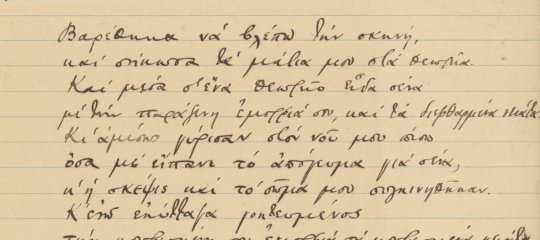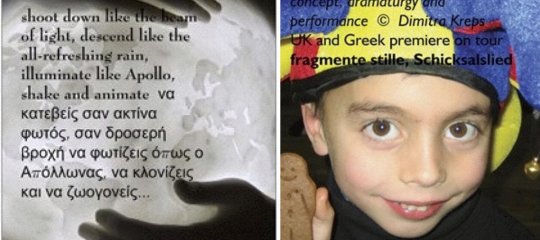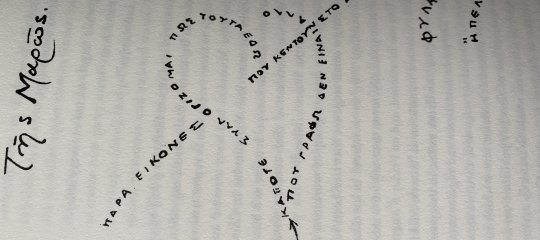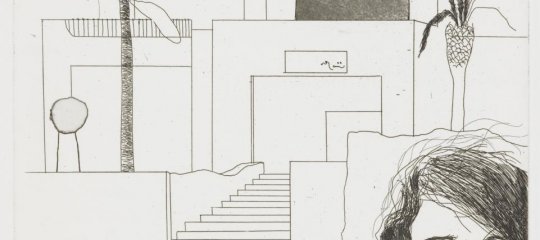Τα νέα ελληνικά στο Μπλαγκόεβγκραντ (Βουλγαρία)
Το Τμήμα Ελληνικών Σπουδών στο Νοτιοδυτικό Πανεπιστήμιο στο Μπλαγκόεβγκραντ ανήκει στην έδρα Ξένων Γλωσσών της Φιλολογικής Σχολής.
Ναταλία Σοτίροβα
12 Δεκεμβρίου 2006
Η εκμάθηση της ελληνικής γλώσσας στο Νοτιοδυτικό Πανεπιστήμιο «Νεόφυτ Ρίλσκι» ξεκίνησε το ακαδημαϊκό έτος 1994/1995 στα πλαίσια της ειδικότητας 'Βαλκανική Γλωσσολογία'. Στη συνέχεια επεκτάθηκε στην ειδικότητα 'Εφαρμοσμένη Γλωσσολογία – βουλγαρικά και νέα ελληνικά'. Από το 1997/1998 η διδασκαλία της ελληνικής πραγματοποιείται στα πλαίσια της ειδικότητας 'Εφαρμοσμένη Γλωσσολογία' με πρώτη γλώσσα τη ρωσική και δεύτερη – τη νεοελληνική. Από το 2004/2005 πρώτη γλώσσα καθιερώθηκε η αγγλική. Προς το παρόν στην ειδικότητα 'Εφαρμοσμένη Γλωσσολογία' με δεύτερη γλώσσα την ελληνική φοιτούν περίπου 40 σπουδαστές, αριθμός ο οποίος ελπίζουμε πως θα αυξηθεί σημαντικά στο προσεχές μέλλον. Η εκμάθηση των νέων ελληνικών συμπεριλαμβάνεται και στα προγράμματα δύο ειδικοτήτων που πρόκειται σύντομα να δημιουργηθούν – 'Εθνολογία και Βαλκανικές Σπουδές'.
Η εισαγωγή στην ειδικότητα αυτή γίνεται με γενική εξέταση στα αγγλικά και η εκμάθηση των νέων ελληνικών ξεκινά από το μηδέν.
Εκτός των γνωστικών αντικειμένων που έχουν σχέση με τις βαλκανικές σπουδές, το πρόγραμμα σπουδών περιλαμβάνει τη διδασκαλία:
•Νεοελληνικής γλώσσας – 8 εξάμηνα
•Θεωρητικής γραμματικής της νεοελληνικής γλώσσας (διαλέξεις και εργαστήρια μορφολογίας και σύνταξης)
•Νεοελληνικής λογοτεχνίας
•Ελληνικού πολιτισμού
•Μετάφρασης
Ιδιαίτερη έμφαση δίνεται στις δυσκολίες στη μετάφραση ελληνικής-βουλγαρικής ΚΑΙ βουλγαρικής-ελληνικής γλώσσας.
Στις 27/10/2005 το Υπουργείο Εθνικής Παιδείας και Θρησκευμάτων της Ελλάδας χρηματοδότησε το Νοτιοδυτικό Πανεπιστήμιο «Νεόφυτ Ρίλσκι»- Τμήμα Ελληνικών Σπουδών για την αγορά υλικοτεχνικού εξοπλισμού, εγκατάσταση γλωσσικών εργαστηρίων, on-line σύνδεση με ελληνικά Πανεπιστήμια και άνοιγμα ιστοσελίδας στο διαδίκτυο. Το πολύμεσο κέντρο εκμάθησης ελληνικής γλώσσας εγκαινιαστηκε στις 30 Νοεμβρίου, παρουσία εκπροσώπων του Διπλωματικού Σώματος της Ελλάδας στη Βουλγαρία, των διοικητικών αρχών του Πανεπιστημίου, καθηγητών και φοιτητών της Φιλολογικής Σχολής.
Η αίθουσα περιλαμβάνει 15 εργαστηριακές θέσεις με ηλεκτρονικούς υπολογιστές και συσκευές με δυνατότητες για πρόσβαση στο Διαδίκτυο. Για τους σκοπούς της διδασκαλίας της Νεοελληνικής αγοράστηκαν διάφορα εκπαιδευτικά προϊόντα (CD, βίντεο κασέτες και βιβλία για την εκμάθηση της ελληνικής γλώσσας, ιστορίας, γεωγραφίας και πολιτισμού).
- Εισέλθετε στο σύστημα για να υποβάλετε σχόλια










